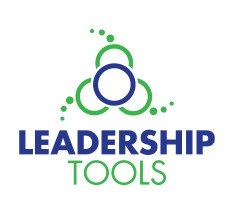Succession Leadership Case Study
Ideas to insure succession leadership is effective

Donna Rae Scheffert, President, Leadership Tools, a U.S. based consulting firm. She is a retired Leadership Development Specialist from the University of Minnesota Extension. She spent over 20 years creating leadership information, tools and training. She is the owner of online-leadership-tools.com
Scheffert is a facilitator, trainer, and strategic planner. She brings experience from over thirty years working with high performing groups. Sometimes succession leadership is part of the solution for groups to make progress.
Following Steve Jobs: Good luck Tim Cook
(Story written August 26, 2011)
“You can replace an executive, but you can’t replace a founder.” (Anonymous Investor)
Incoming Apple CEO Successor Tim Cook has his work cut out for him. Here is a crash course in followership.
CEO succession events are critical junctures for organizations. When the executive is also a founder, it is trickier. Luckily, those who have been in their shoes and scholars think deeply about this transition.
Introduction
This year I worked with two organizations who were led by successful founders. The founders were leaving and the followers were, well, floundering. They knew that a new leader was necessary and that things would never be the same again. I learned new concepts including: ‘Founder Separation,’ ‘Succession Planning’ and ‘On-Boarding Successors’.
Founder Separation
“Work yourself out of a job. Look at it with the idea of training others to carry on the work. Its one thing to think 'this is mine forever.' But as a founder, it's not yours to keep.” (Anonymous CEO)
Susan Kenny Stevens is an expert on founders, especially in the nonprofit sector. She says,
“Founders, like many entrepreneurs, march to their own drummers… They need no one's approval…. They defy conventional methods….. There is always more to be done and never enough time or money to do it….. The drive for sustainability forces founders to face the toughest of all questions:
Do I want my organization to survive me? If so, what must happen to institutionalize my vision?”

Succession Planning
“Organizational survival is the ultimate indicator of success.” (Hannan and Freeman, 1989)
Noam Wasserman at Stanford University studied large firms. He authored ‘Founder CEO Success and the Paradox of Entrepreneurial Success.’ This was a thoughtful study of large firms that offers many strategies.
For example, in product development are you at a completion point? Is your financing secure for the next term? It is easier for CE0-Founders to negotiate with investors than the successor.
On-Boarding Successors
“Work with the board as you develop into the work. Partner with staff that is strong in areas where you are weak. Be authentic and remember it is about the strength of organization, not about you looking good." (Anonymous CEO) The most neglected step when it comes to succession planning is preparing for what happens after the successor is named. Making succession a sink-or-swim shock is simply too risky to endure. There is no such thing as a "ready now" candidate. Anyone named as a successor has learning to do and mistakes to recover from.
Post Arrival
The ‘Post-Arrival Factor’ matters too. This is actions taken by the new CEO and their accumulation of “sources of power and influence.” Positively supported actions and garnering power will make all the difference in the long run.

Leadership Tools Consulting
Dream. Decide. Do.
Facilitation. Training. Strategic Planning.
Donna Rae Scheffert
809 Mayflower Ct.
Northfield, MN 55057
Let me assist you and your organization. Call me at 612.360.4484
